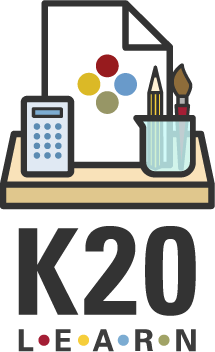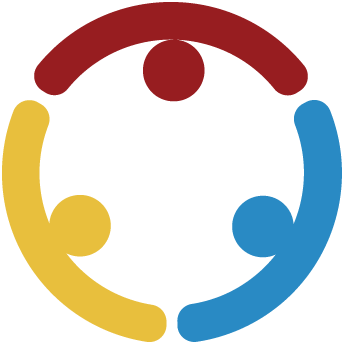Summary
The PLC Check-In session is designed as a 30-minute PLC-style meeting where supporting staff engage with the teachers who are facilitating an intervention to ensure successful implementation of the plan. This session serves as a fidelity check, providing the structures and space to address questions, collect and document data, and support instructional alignment.
Essential Questions
How can we ensure high-fidelity implementation and support teachers in using data to inform instruction?
Snapshot
Before
Before the check-in meeting, the facilitator will review implementation plans and data collection (if applicable) and be prepared to clear up any mismatches or misunderstanding either individually or as a group during the meeting. Participants will complete a check-in form before the meeting.
During
During the meeting participants will use a structured reflection to guide discussion about implementation and ways to improve going forward.
After
After the meeting, participants will continue to implement activities and the facilitator will continue to monitor and prepare for the next check-in meeting.
Materials List
Leader’s Guide
Check-in Form
SCORE Reflection
What? So What? Now What? Reflection
Aha! Huh? Uh-uh Reflection
Rose, Bud, and Thorn Reflection
Learning Goals
Confirm lesson implementation, verify TREK data entry, and document at least one instructional question or barrier encountered during the previous week/s
Before
60 Minute(s)
Preparation for Meeting Leaders: Use the PLC Check-in Leader’s Guide to help guide you during the meeting. Ensure that the leader, note-taker, and timekeeper are assigned, if necessary.
Prior to this meeting the PLC Check-in form should be shared with all participating teachers and staff either through a digital form format/system that is part of your school technology ecosystem, a digital document, or paper copies depending on what works best for your group.
During
60 Minute(s)
The assigned leader welcomes the team and reviews the purpose and norms for the meeting.
Suggested Norms:
Start and end on time.
Arrive with the PLC Check-in form completed.
Be fully present, focusing on student learning issues with implementation and instruction.
Rotate leadership roles (facilitator, note-taker, timekeeper).
Start the meeting by conducting a quick Round Robin of lesson completion status and PLC Check-in form completion. Then move into a structured reflection strategy from the list below.
In the following section, you will find instructions listed for four strategies that your PLC could use to reflect on and discuss the implementation of your intervention.
You may choose one of these strategies for your group to use consistently. However, if your group meets frequently, consider rotating among the strategies. Varying your approach can help keep reflections fresh and give group members diverse opportunities to process and share their thoughts.
Before ending the meeting, discuss the upcoming week.
Are you clear on how you’ll check for understanding during the activity?
Have you anticipated possible student misconceptions or questions?
How will you frame the activity to maximize its value among students not considering attending a Post-Secondary Institution (PSI)?
After
60 Minute(s)
After the meeting the note-taker should prepare an email from their notes or share a digital version of their notes with the group.
Notes should include:
Document key takeaways: Summarize the main insights from the discussion
Identify action steps: What will you do next week to improve implementation?
Submit support requests: What help do you need from K20 staff or colleagues?
Plan for follow-up: What should be revisited in the next PLC check-in?
Follow-Up Activities
60 Minute(s)
Continue implementing your action plan intervention with students. Follow up with teachers using this Check-in meeting format following a weekly, bi-weekly, or at the frequency that makes most sense for your intervention activities.
Research Rationale
Recent studies highlight that PLCs positively impact both school climate and student achievement (Anderson & Oliver, 2022; Goode et al., 2020; Bergeron, 2020; Verdi, 2022; Lasater et al., 2021). While PLCs have traditionally supported teacher professional learning (Anderson & Oliver, 2022; Louis & Marks, 1998), recent years have seen a shift toward more collaborative inquiry and discourse among educators. This evolution fosters peer-to-peer learning within PLCs and strengthens teacher self-efficacy, which in turn enhances student learning outcomes (Ebbeler et al., 2017; Kippers et al., 2018; Schildkamp, 2019; Schildkamp et al., 2019; Anderson & Oliver, 2022; Goode et al., 2020).
Resources
Anderson, S. G., & Olivier, D. F. (2022). A quantitative study of schools as learning organizations: An examination of professional learning communities, teacher self-efficacy, and collective efficacy. Research Issues in Contemporary Education, 7(1), 26-51.
Bergeron, L., (2020). An investigation into the relationships among middle school teachers’
beliefs about collaboration, their perceptions of formative assessment, and
selected teacher characteristics. Current Issues in Education, 21(3), 1-18.
Ebbeler, J., Poortman, C. L., Schildkamp, K., & Pieters, J. M. (2017). The effects of a data use
intervention on educators’ satisfaction and data literacy. Educational Assessment, Evaluation
and Accountability, 29, 83–105.
Goode, J., Peterson, K., Malyn-Smith, J., & Chapman, G. (2020). Online professional
development for high school computer science teachers: Features that support
an equity-based professional learning community. Computing in Science & Engineering,
22(5), 51-59.
Lasater, K., Albiladi, W. S., Davis, W. S., & Bengtson, E. (2020). The data culture continuum:
An examination of school data cultures. Educational Administration Quarterly. 56(4).
Louis, K. S., & Marks, H. M. (1998). Does professional community affect the classroom?
Teachers’ work and student experiences in restructuring schools. American journal of
education, 106(4), 532-575.
Kippers, W. B., Poortman, C. L., Schildkamp, K., & Visscher, A. J. (2018). Data literacy: What do
educators learn and struggle with during a data use intervention? Studies in Educational E
valuation, 56, 21-31.
K20 Center. (n.d.). Rose, bud, thorn. Strategies. https://learn.k20center.ou.edu/strategy/2224
K20 Center. (n.d.). SCORE reflection. Strategies. https://learn.k20center.ou.edu/strategy/3694
K20 Center. (n.d.). What? So what? Now what? Strategies. https://learn.k20center.ou.edu/strategy/95
Schildkamp, K. (2019). Data-based decision-making for school improvement: Research insights
and gaps. Educational Research, 61(3), 257–273.
Schildkamp, K., Smit, M., & Blossing, U. (2019). Professional development in the use of data: From
data to knowledge in data teams. Scandinavian Journal of Educational Research, 63(3), 393–411.
Verdi, B. (2022). Creating professional learning communities for music educators. Music
Educators Journal, 109(2), 14-21.


